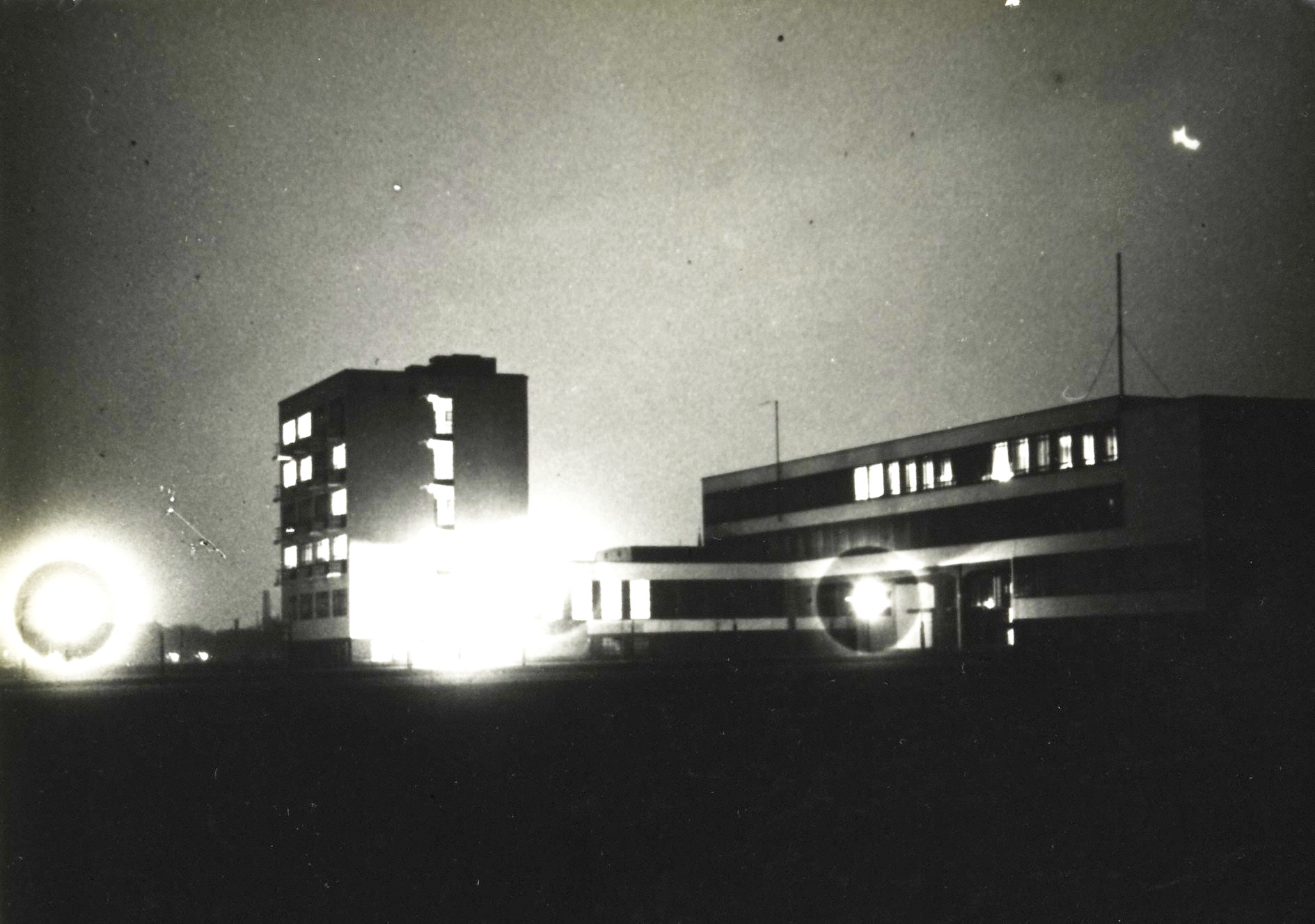
Lyonel Feininger’s photo, “Bauhaus,” is part of the Getty’s “Lyonel Feininger: Photographs, 1928-1939″ also on display at The Getty Museum through March 11, 2012. (Courtesy of J. Paul Getty Museum)
The antique lenses of a Voigtlander Bergheil camera and a Leica I Model A camera reflect gallery lights from beneath their glass cases.
They belonged to artist and photographer Lyonel Feininger, and though not hung prominently on the wall, they’re at the heart of the Getty’s latest exhibition, “Lyonel Feininger: Photographs, 1928-1939,” which examines the artist’s first decade of photography.
Ironically, it’s a feat that Feininger ever even touched a camera.
“Feininger hadn’t always been a huge fan of photography. He felt it was a mechanized, mechanical medium that was going to displace painting,” said Laura Muir, assistant curator at the Harvard Art Museums/Busch-Reisinger Museum. “It’s a surprising change of heart that takes place in 1928.”
While living at the German Bauhaus arts school, the already accomplished painter and caricature artist began experimenting with the modern medium of photography.
“This body of photography was largely undiscovered, unknown until Laura (Muir) worked with it,” said Virginia Heckert, associate curator of the Getty’s Department of Photographs. The chosen works are drawn largely from Harvard, where Feininger’s youngest son, Theodore Lux Feininger, donated his father’s photography archive.
Lyonel Feininger’s ethereal early black and white prints play with light and shadow, using the Bauhaus as a backdrop for his atmospheric nightscapes.
“When he goes out to take photographs it’s a very solitary, private endeavor and I think that’s reflected in these haunting photographs,” Muir said.
The exhibition chronicles Feininger’s work alongside additional galleries featuring his sons’ and other Bauhaus photography through the onset of Nazi German rule, whose officials flagged Feininger as a “Dengenerate Artist,” confiscating more than 300 pieces of his work before prompting the artist’s return to his birthplace of New York in 1937. The experience influenced some of the artist’s most surreal photography.
Running concurrently with Feininger’s work is contemporary exhibition “Narrative Interventions in Photography,” featuring 34 photographic works by Eileen Cowin, Carrie Mae Weems and Simryn Gill.
The works offer varied interpretations of “narrative,” as each artist incorporates text into their work to challenge traditional storytelling.
Inspiration for L.A.-area artist Cowin’s featured series, “I See What You’re Saying,” began with a National Public Radio program exploring “the moral and ethical complications of lying.” Cowin pairs enlarged diptych images of altered texts, many of them Grimm’s Fairy Tales, alongside magnified details of human expression.
According to Cowin, she became interested in elements of language and deceit and how the two can construct false narratives. In one pairing is a woman’s open mouth, a silver fork pressed against her tongue. Juxtaposed beside the amplified view is a photo of the stabbed pages of “Snow White and the Seven Dwarfs.”
“The text that is on the page (acts) as a form of communication paired against another way of communicating which is of course in person ““ not just verbally, but through body language,” said Anne Lyden, associate curator of the Getty’s photography department. “These tensions are inherent, but of course neither is more valid than the other.”
Weems’ series, “From Here I Saw What Happened and I Cried,” enlarges and alters 19th century daguerreotypes of African Americans, etching text over each portrait.
According to Lyden, Weems’ process thus aims to rewrite history, suggesting that historical imagery can also be viewed from multiple perspectives.
Gill, a photographer, uses books that hold personal connections, shredding and affixing them directly into the environment in her series “Forest.” Pages from a Chinese cookbook, for instance, are glued to leaves and photographed before their disintegration into the Malaysian forest where Gill spent her childhood.
“For me there’s this really philosophical questioning of narrative and really thinking about what it is that we hear every day in our lives and whether or not that is a truth or not,” Lyden said. “(It) becomes universal. … Where do we all fit in? … What is the narrative that we choose to share today?”
